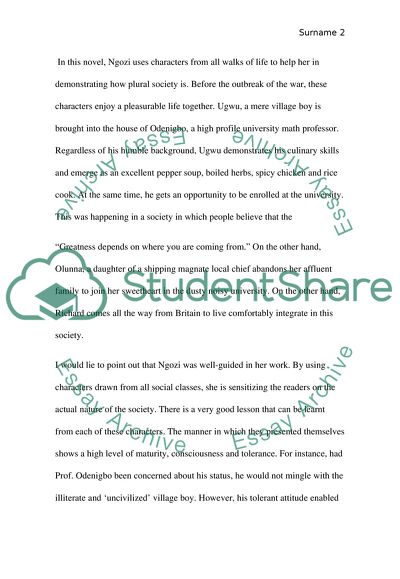Cite this document
(Half of a Yellow Sun by Chimamanda Ngozi Adichie Book Report/Review Example | Topics and Well Written Essays - 1500 words, n.d.)
Half of a Yellow Sun by Chimamanda Ngozi Adichie Book Report/Review Example | Topics and Well Written Essays - 1500 words. https://studentshare.org/anthropology/1816195-half-of-a-yellow-sun
Half of a Yellow Sun by Chimamanda Ngozi Adichie Book Report/Review Example | Topics and Well Written Essays - 1500 words. https://studentshare.org/anthropology/1816195-half-of-a-yellow-sun
(Half of a Yellow Sun by Chimamanda Ngozi Adichie Book Report/Review Example | Topics and Well Written Essays - 1500 Words)
Half of a Yellow Sun by Chimamanda Ngozi Adichie Book Report/Review Example | Topics and Well Written Essays - 1500 Words. https://studentshare.org/anthropology/1816195-half-of-a-yellow-sun.
Half of a Yellow Sun by Chimamanda Ngozi Adichie Book Report/Review Example | Topics and Well Written Essays - 1500 Words. https://studentshare.org/anthropology/1816195-half-of-a-yellow-sun.
“Half of a Yellow Sun by Chimamanda Ngozi Adichie Book Report/Review Example | Topics and Well Written Essays - 1500 Words”. https://studentshare.org/anthropology/1816195-half-of-a-yellow-sun.


